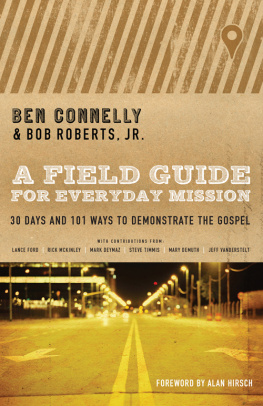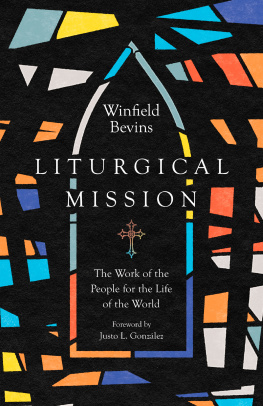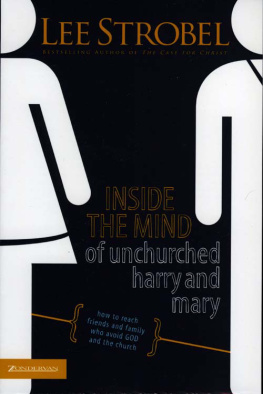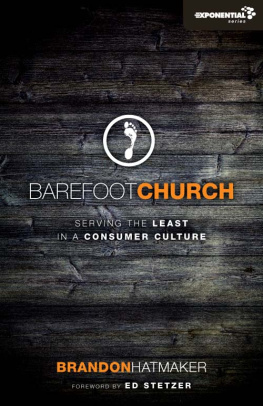Thank you for downloading this Crossway book.
Sign-up for the Crossway Newsletter for updates on special offers, new resources, and exciting global ministry initiatives:
Crossway Newsletter
Or, if you prefer, we would love to connect with you online:
Facebook
Twitter
Google +
Instagram
Everyday Church: Gospel Communities on Mission
Copyright 2012 by Tim Chester and Steve Timmis
North American edition published by Crossway
Published by Crossway
1300 Crescent Street
Wheaton, Illinois 60187
Originally published by Inter-Varsity Press, Nottingham, England. Copyright 2011 by Tim Chester and Steve Timmis. North American edition publishing by permission of Inter-Varsity.
All rights reserved. No part of this publication may be reproduced, stored in a retrieval system, or transmitted in any form by any means, electronic, mechanical, photocopy, recording, or otherwise, without the prior permission of the publisher, except as provided for by USA copyright law.
Cover design and image: Matt Naylor
Art direction: Patrick Mahoney, The Mahoney Design Team
First printing 2012
Printed in the United States of America
Unless otherwise indicated, Scripture quotations are from The Holy Bible, New International Version, NIV. Copyright 1973, 1978, 1984 by Biblica, Inc. Used by permission. All rights reserved worldwide.
Scripture quotations marked esv are from the ESV Bible (The Holy Bible, English Standard Version), copyright 2001 by Crossway. Used by permission. All rights reserved.
Scripture quotations marked kjv are from the King JamesVersion of the Bible.
Scripture references marked nlt are from The Holy Bible, New Living Translation, copyright 1996, 2004. Used by permission of Tyndale House Publishers, Inc., Wheaton, Ill., 60189. All rights reserved.
Trade paperback ISBN: 978-1-4335-3222-1
Library of Congress Cataloging-in-Publication Data
Chester, Tim.
Everyday church: Gospel communications on mission / Tim Chester and Steve Timmis.North American ed.
p. cm.
Includes bibliographical references and index.
ISBN 978-1-4335-3222-1 (tp)
1. Bible. N.T. Peter, 1stCommentaries. I. Timmis, Steve, 1957- II. Title.
BS2795.53.C44 2012
2012006166
227'.9207dc23
Crossway is a publishing ministry of Good News Publishers.
VP 21 20 19 18 17 16 15 14 13 12
15 14 13 12 11 10 9 8 7 6 5 4 3 2 1
CONTENTS
In 1915 Tims grandmother moved to a two-up, two-down terraced house in Darlington, an industrial town in the north of England. She was one year old. The street was still being built when she moved. So was the Methodist chapel two streets over. That house became her home for the next ninety years, and the chapel became a second home.
When my mother was a child, the congregation was comprised of one hundred attendees, with a choir of twenty plus another fifty children in the Sunday school. More than that, the church was at the heart of neighborhood life. Church concerts, church teas, church outingsthese were the only alternatives to the pub that most working-class people in the area had. My grandmother and my mother grew up with the church at the center of their lives. My grandmother was still playing the piano on Sunday mornings into her nineties. Her failing hearing meant she had trouble hearing the singing, but there was no one else.
Today, the congregation has dwindled to just a dozen or so people, none of whom are under fifty. Local people have other things to do on a Sunday morning. Choir recitals cannot compete with the Xbox and The X Factor . The building, freshly constructed when my grandmother began attending, has become a relic, a monument to a former way of life. It plays no part in the lives of all but a handful of people. It is part of the neighborhoods history but not its present.
Christians today increasingly find themselves on the margins of the culture. We live in a post-Christian culture. The majority of people in the West today have no intention of ever attending church. Most name the name of Christ only as a swearword. Some prominent churches are growing, but much of this is transfer growth rather than true evangelistic growth.
However, many of our approaches to evangelism still assume a Christendom mentality. We expect people to come when we ring the church bell or put on a good service, but the majority of the population are disconnected from church. Changing what we do in church will not reach them. We need to meet them in the context of everyday life. Our previous book, Total Church , argued that the Christian gospel and the Christian community should be central to every aspect of our life and mission. This book builds on that foundation. It is a call for us to be an everyday church with an everyday mission . We need to shift our focus from putting on attractional events to creating attractional communities. Our marginal status is an opportunity to rediscover the missionary call of the people of God. We can recover witness to Christ unmuddied by nominal Christianity.
It is also an opportunity to reconnect with our Bibles. The New Testament is a collection of missionary documents written to missionary situations. It was written by Christians living on the margins of their culture. Throughout this book we want to enter into a dialogue with the first letter of Peter. Peter was writing to Christians who found themselves strangers and exiles in the first-century Roman Empire. They were on the margins facing slander and abuse, much as we are. This is not a commentary. Instead we offer some missional reflections on 1 Peter to explore what the Spirit would say to the Western church today through this portion of Gods Word. Above all, we have tried to write a practical book that shows what everyday church and everyday mission might look like on the ground.
In calling the church to everyday mission we recognize that this is what many Christians are already doing: being good neighbors, colleagues, and family members; doing good in the face of hostility; and bearing witness to Christ in the context of ordinary life. Our aim is not to dismiss this. Quite the opposite. We want to celebrate it and put it back at the center of the churchs mission, and perhaps also give it more direction and show how it can be more intentional.
We have written this book together and so generally use plural pronouns (we, us). But where we describe an experience or story particular to one of us, we have used a singular pronoun (I, me).
1 PETER 1:112
It is easy for Christians to feel discouraged when we read about declining church attendance or see the growing secularization of our culture, but we are excited about the future. In many ways the opposite of secularism is actually nominalism, so growing secularism is an opportunity to develop witness to Christ unclouded by nominal faith. Much of the decline in the church in the West has been the falling off of nominal Christians. As a result, what remains may be more healthy. We have the opportunity to become communities focused on Jesus and his mission. The number of true Christians may not be falling so steeplyif at all. What is fast disappearing is the opportunity to reach notionally religious people through church activities.
To seize these new opportunities, we first need to recognize that the Christian gospel has moved from the center of our culture to the margins.










